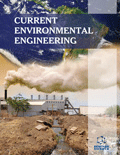Abstract
Background: The severe increase in the consumption of fossil fuels has caused great concern. The natural resources required to produce those fossil fuels cannot be replaced in a short period of time. Therefore, the demand for alternative energy sources that can substitute petroleum-based sources and diminish the negative environmental impacts generated from the manufacturing and processing of fossil fuels has garnered attention.
Objective: Among the studied alternatives, biodiesel production using microorganisms has shown several advantages over other types of biofuels. However, the production of biodiesel is still not economically feasible. As such, this study uses sugar cane molasses to reduce the cost of raw materials and optimize the culture conditions to obtain a high lipid yield from an oleaginous yeast that can be eventually used to produce biofuel.
Results and Conclusion: The following culture medium conditions were found to maximize the lipid accumulation from the yeast, Cryptococcus curvatus when grown in a 5% m/v molasses medium (50 g/L molasses): 34.89°C, pH 5.99, and C:Nof 121.25 as result of flask testing and data analysis with the Box-Behnken Design. The existence of palmitic acid (C16:0), oleic acid (C18:1), and linoleic acid (C18:2) as the dominant components accounting for 82.26% of the total was confirmed through the fatty acid composition and lipid analysis (FAMEs). This suggests that the lipids accumulated by C. curvatus may be suitable to be used as a biodiesel source. This result was corroborated by the bis-allylic position equivalent (46.23) and cetane number values (52.31), which met both American and European standards for biodiesel quality.
Keywords: Box-behnken design, biodiesel, oleaginous yeast, Cryptococcus curvatus, C:N ratio, fatty acid methyl esters, sugar cane molasses, response surface methodology.
Graphical Abstract
 27
27 2
2

